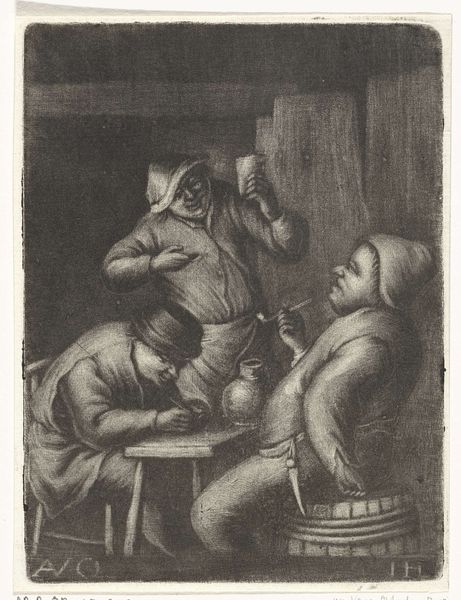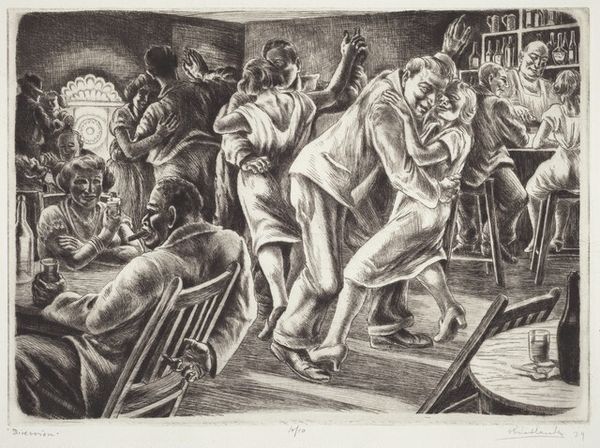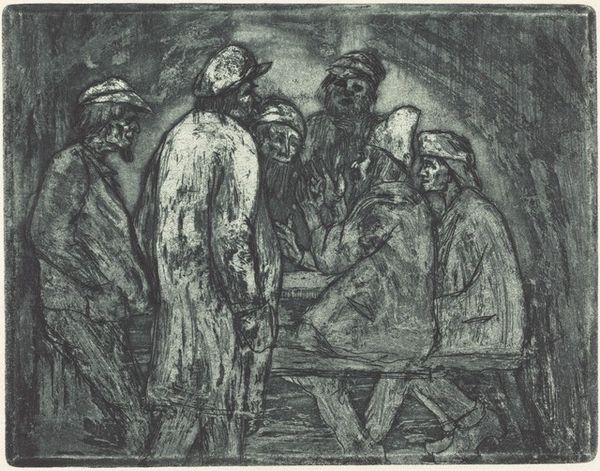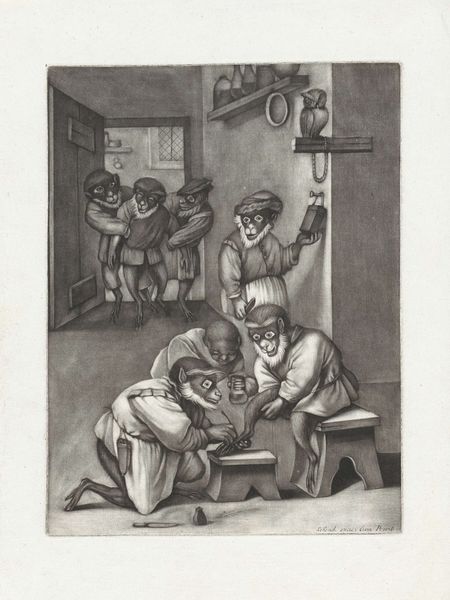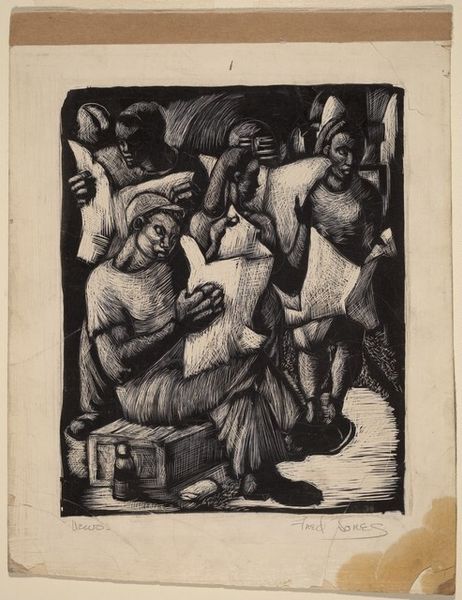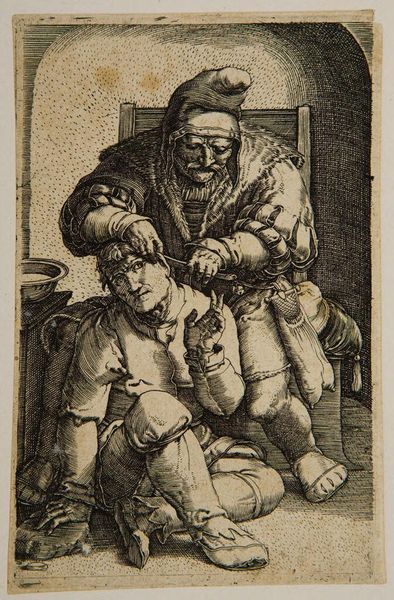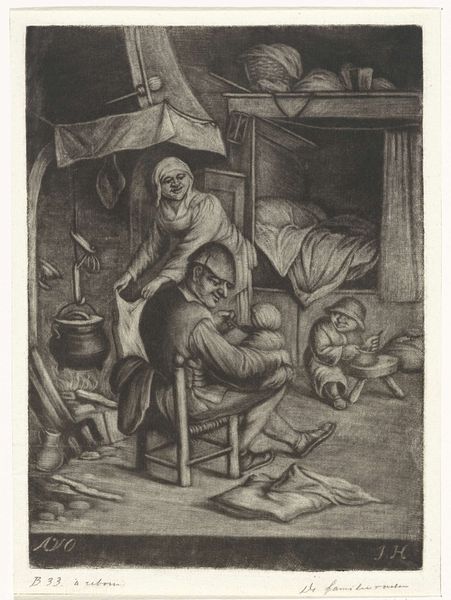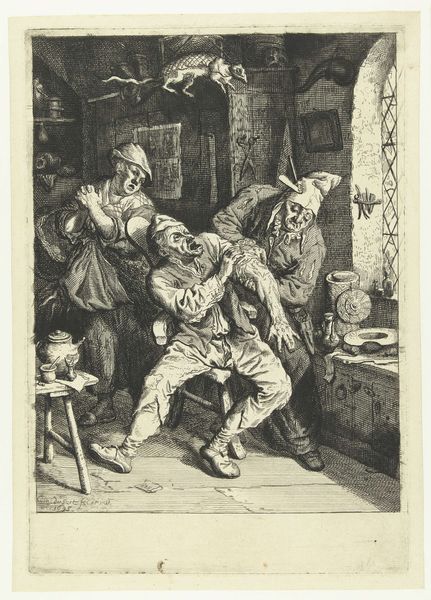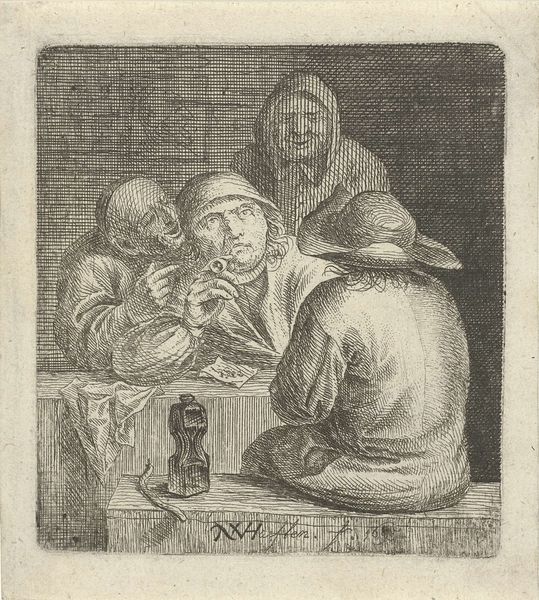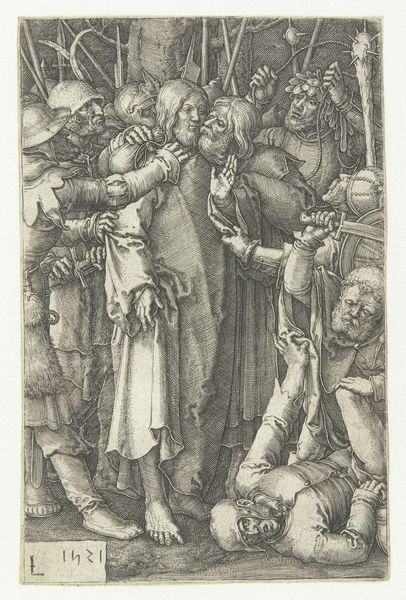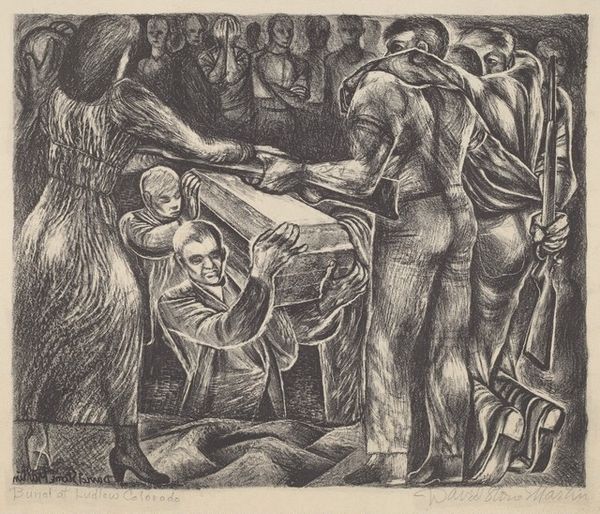
drawing, print, ink
#
portrait
#
drawing
# print
#
ink
#
pencil drawing
#
cityscape
#
realism
Dimensions: image: 310 x 238 mm sheet: 406 x 289 mm
Copyright: National Gallery of Art: CC0 1.0
Curator: Victor Thall's "Waterfront Bar," believed to be created sometime between 1935 and 1943, arrests your gaze immediately with its stark realism. It's a print, done in ink. What impressions does it spark for you? Editor: My initial reaction is a heavy sense of atmosphere—claustrophobia, maybe. The density of the figures, all crammed together, the sharp contrasts…it’s certainly not a light-hearted scene. Curator: The setting evokes a strong sense of place and speaks volumes about the era's social dynamics. Consider the maritime economy's history, gender, and power, influencing such establishments. What are your thoughts? Editor: I think Thall is commenting on marginalized groups. I mean, there is a racial dynamic here, the lack of space—the desperation. I am interested in the woman there, she is sort of being used as a prop? It makes me wonder about class and gender hierarchies intersecting. Curator: The Public Works of Art Project supported a lot of artists in the 30’s—including Thall, here. You get a range of artists interpreting contemporary American experience, including critiques of American culture. In the "Waterfront Bar" we have working people relaxing, engaging with the social rituals after working hours. Editor: And that moment of leisure is vital, isn’t it? To look closely at those scenes—however cramped, in this case—tells a different story from what the official historical narrative presents. It can reframe how we consider our relationship to each other, right? Curator: Absolutely. And Thall's choices in composition really pull us in. Notice how he uses light and shadow to create depth and focus? Editor: And it really underscores the alienation each subject could be feeling despite physical proximity. There's so much packed in terms of representation in this single scene. Curator: Indeed. “Waterfront Bar" isn’t just a historical document; it is also a poignant reflection on the complexity of urban social experiences. Editor: It shows, as well, the enduring value of exploring these nuanced interactions to disrupt assumptions we have about identity and experience. Thanks for spotlighting the sociopolitical nuance of this work!
Comments
No comments
Be the first to comment and join the conversation on the ultimate creative platform.


